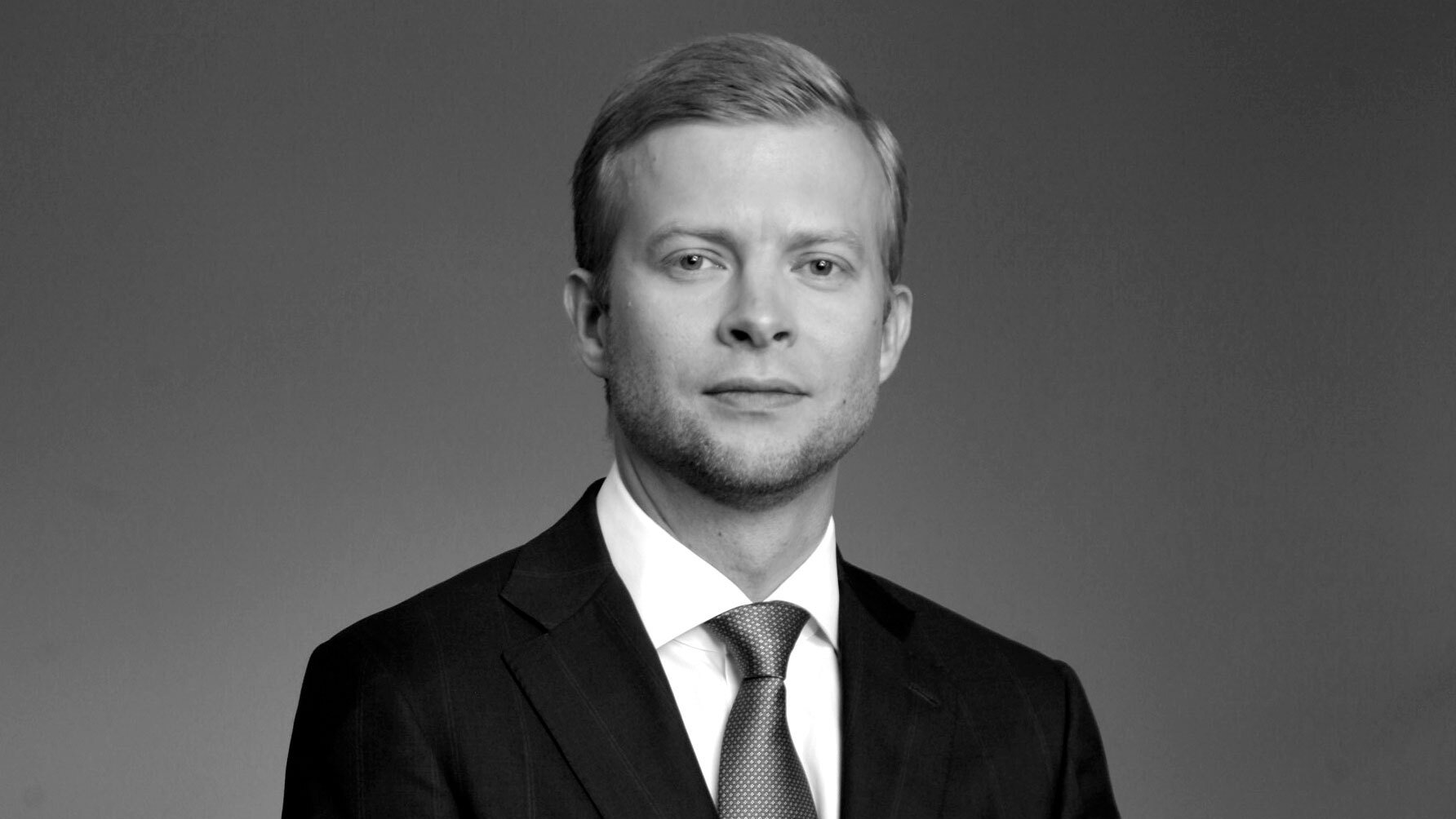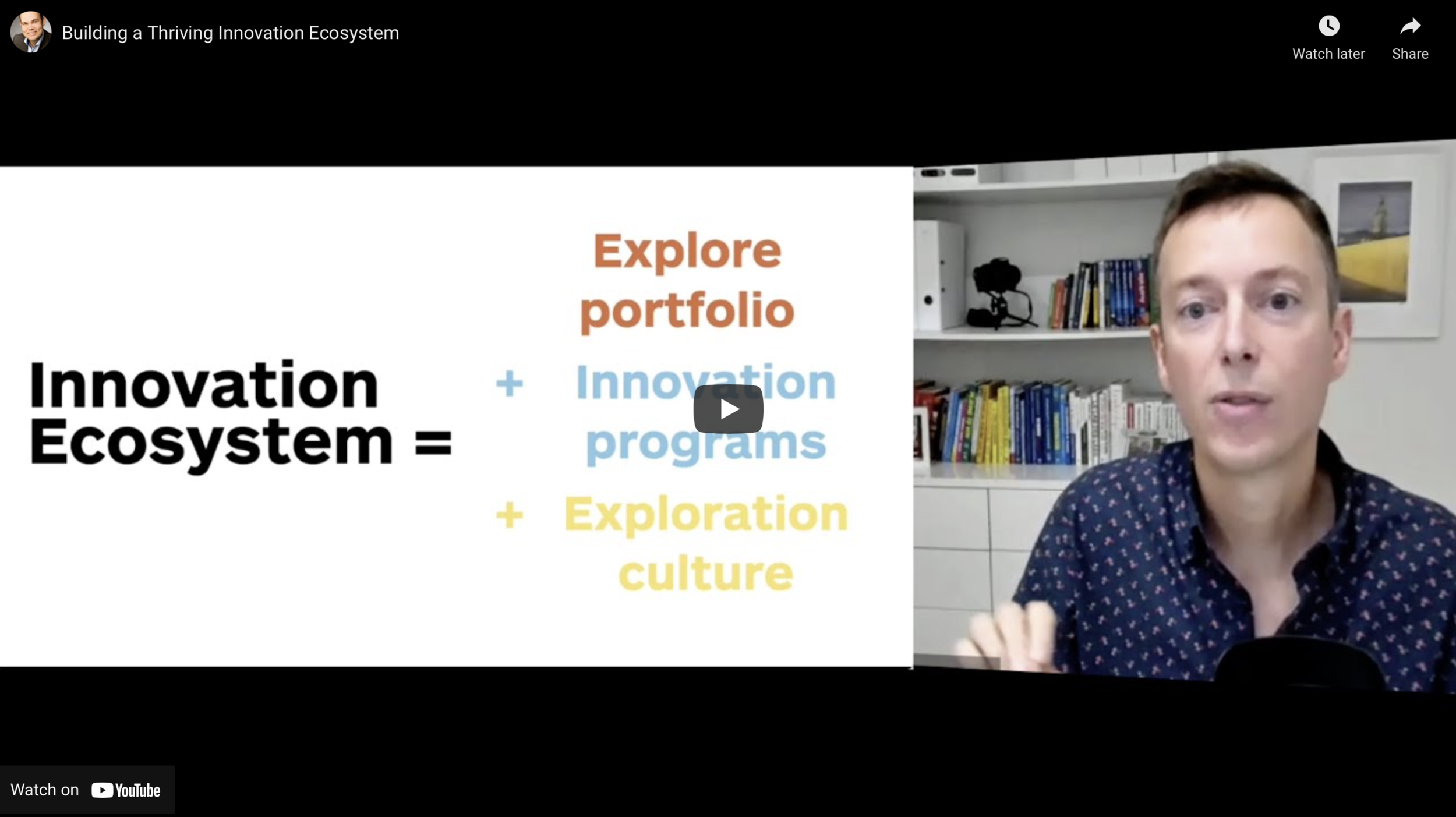An Example from the Pharma Industry on How To Build a Thriving Innovation Ecosystem
It takes time and investment to create a sustainable innovation ecosystem, one that enables repeatable innovation outcomes in a large organization, be it new products, services or businesses. And it requires many decisions along the way.
So, when you lead the development of the innovation ecosystem of a large organization, how do you navigate your way?
Since mid-2020 we’ve been working with a leading pharmaceutical company to help them build an innovation ecosystem that would enable them to explore a large number of new business ideas and create new value propositions and business models that would live alongside the existing ones. We started by helping them assess the different dimensions of their current innovation ecosystem, looking at:
- their portfolio of projects, and the framework they use to manage them,
- the active innovation programs in their organization,
- and their current innovation culture.
From Long-Term Ambitions to the Next 12 Months
Ultimately building a thriving innovation ecosystem requires strong or world-class performance in all dimensions of the ecosystem, i.e. all dimensions of the innovation portfolio, programs and culture. But it’s not something that can be achieved overnight.
For this team, there were many potential pathways to develop and improve their innovation ecosystem.
We started by clarifying their innovation strategy and long-term ambition, and then transformed those long-term goals into actionable priorities for the coming 12 months. As a result, the corporate innovation team selected the three priorities that would have the highest leverage in the short-term to help them build a sustainable innovation ecosystem.
1. Rebalancing the Innovation Portfolio
In a previous post I introduced the 3 types of innovation framework : efficiency, sustaining, and transformative innovation. Each type of innovation was represented with an example from Amazon. Indeed, Amazon has a balanced portfolio with innovation initiatives across the three types of innovation. But most of our customers do not innovate like Amazon. Many have an innovation portfolio that is massively geared towards efficiency innovation, with a low percentage of sustaining innovation projects, and even fewer transformative innovation projects. This was also the case at this Pharma company, so their first goal was to rebalance their exploration portfolio towards more sustaining and transformative ideas and projects.
2. Strengthening the Portfolio Management Muscle
In a previous post, we introduced the idea that more transformative outcomes require more volume. Indeed, in transformative innovation, the rules of the game are different from the other two types of innovation: transformative innovation is a volume game.
In venture capital, investors understand that it is impossible to predict in advance which start-ups will become tomorrow's successes. To maximize the chances of investing in future successes venture capitalists invest in a large number of projects, and accept to lose their investment in the vast majority of cases.
In this Pharma company, we wanted to maximize the chances of transformative outcomes so one of their goals was to have a higher volume of ideas and projects in the Explore portfolio. We needed to increase the volume from 15-20 new ideas explored per year, which is easy in a large organization, to an ambitious 150-200 ideas a year, which requires different resource allocation decisions and more challenging interventions on the innovation ecosystem.
3. Developing a Strong Experimentation Capability through Process Management
In a recent post, we listed the most common experiment pitfalls and how to avoid them. It is very likely that innovation teams will experience those pitfalls, especially in the first stages of the development of an innovation ecosystem. And that could lead to a frustrating slow experimentation speed. In this Pharma company, this is what happened with their very first cohort of innovation teams, so their third goal was to put in place an innovation process enabling a much higher speed of experimentation.
Below is the Innovation Culture Readiness Assessment we used to identify objectives 2 & 3.
Staying True to Short-Term Goals
Every time the corporate innovation team needed to decide…
which program to launch next,
which improvement to make to their innovation framework,
which intervention to prioritize to change the innovation culture,
which project and team to further invest in,
… then they asked themselves what decision would help them best progress towards:
more transformative innovation,
a larger volume of ideas and projects,
faster testing speed.
They used the below sliders to make their progress towards those short-term goals more visual and explicit, showing the leadership team how they were turning on the volume on their innovation efforts.
That’s how the corporate innovation team in this Pharma company agreed to manage the first 12 months of their long journey to build a sustainable innovation ecosystem.
It is still too early to say if they will succeed and become world-class in all dimensions of innovation. But for now, it seems to be paying off, by enabling them to:
stay highly focused,
allocate resources efficiently,
and maintain strong alignment with the leadership team of their organization.













